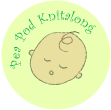Whenever I get a new obsession, I go book shopping. My book cases reflect an eclectic mix of intellectual interests going back to junior high, but lately, my crafting book purchases completely dominate. Since good spinning books are so hard to come by here, I buy them whenever I can find them, and as a result I have perhaps not been critical enough in my purchases. The below reviews are written very much from the perspective of someone who only uses drop spindles. Please keep that in mind!
Maggie Casey: Start spinning: Everything You Need to Know to Make Great Yarn (Interweave Press 2008)
Lee Raven: Hands on Spinning (Interweave Press 1987)
I got Raven’s book first, and then when Casey’s book came out I heard so many good things about it that I got that one too, but I could definitely have made do with one of them. These are basic, introductory spinning books. Both cover the drop spindle and the spinning wheel, but both focus heavily on the latter. Raven’s book has mostly black-and-white illustrations, and not all essential steps are fully illustrated. On the other hand, Casey’s book has full-colour photographs showing every step of the process. While the chapter structure in Casey’s book is a little hard to grasp, the material covered in every chapter is very clear and easily understood. Raven’s book has five patterns (knit and weave) for handspun yarn, but the patterns clearly show their 80’s origin. Casey’s book instead has a small chapter devoted to pictures of projects using handspun. No patterns, but plenty of inspiration!
In conclusion: Either of these books would do very well if you want an overview of spinning with an emphasis on the spinning wheel. They’re not nearly as satisfactory for a spindle spinner, but will get you started. The Casey book has better pictures and a cleaner, more modern look, but if you can only find the Raven book it’s a reasonable substitute.
Priscilla A. Gibson-Roberts: High Whorling: A spinner’s guide to an old world skill (Nomad Press 1998)*
Connie Delaney: Spindle Spinning: From novice to expert (Kokovoko Press 1998)
*Please note that the Gibson-Roberts book has recently been updated and republished as a paperback under the title “Spinning in the Old Way”.
I’ve only recently received these books, so my review can’t do them justice, but I will point out that these are much better starting books if you think you will mainly use a spindle for your spinning. As the title suggests, Gibson-Roberts book is solely devoted to the magnificence of high-whorl drop spindles, and a very opinionated book it is, too. I like reading passionate and opinionated books, even if I don’t always agree, but keep that in mind about this book. It is useful for its discussion on spindle anatomy. Delaney’s book covers almost the whole world of spindle spinning: top whorl, bottom whorl, tiny support spindles and the large navajo spindle. Guides to making your own versions of these spindles are in there, as well beginner’s and advanced instructions. I especially appreciate the tips on increasing your spindling speed.
These are both good books for people primarily interested in spinning with drop spindles. They are both older books and cheaply produced, but both contain masses of interesting information and will be useful beyond the rank beginner stage.
Deb Menz: Color in Spinning (Interweave Press 2005)
WOW! I love this book. The only word for it is exhaustive. I’m not good with colour and have never worked with colour theory before, but after reading the opening chapter in this book I got out my son’s paints and worked up some tints and shades. It covers the theory, the dyeing, the blending and the spinning of yarns for different colour effects. Arguably the best part of the book is the project gallery towards the back, where all the different techniques are displayed with a subtlety that is just stunning. There’s very little, if any, wheel-specific information in the book, and I’ll use it even for non-spinning projects, because of all the general colour theory in the book.
Diane Varney: Spinning designer yarns (Interweave Press 2003)
I have a feeling I’ll come back to this book again and again as my spinning improves. It is packed with different techniques for making designer yarns, without being crazy novelty yarns like those in Pluckyfluff or Intertwined (not that there’s anything wrong with those yarns, they’re just not my style). While being opinionated, Varney gives a thorough introduction to the different techniques, how they look, what uses they are suited for and how they are executed. Although very inspiring and interesting, this book would have benefited greatly from an aesthetic overhaul with more colour pictures and more lavish illustrations.











1 comment
Comments feed for this article
16 May 2008 at 14:17
Linda S.
You haven no idea how helpful these book reviews are to me. I live in an area where there are very few spinners…as a result there is little information even at the library. I have to order my books online and that gives me very little info on each book… Thank you!
Thanks for visiting my blog. I like yours too…grin Will be back often!